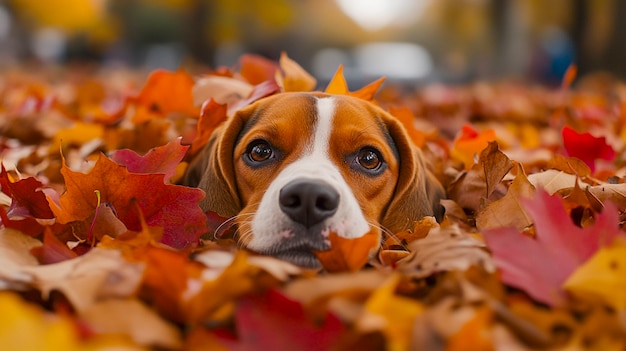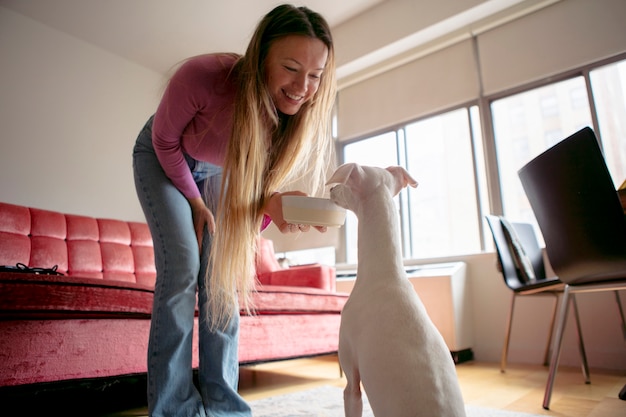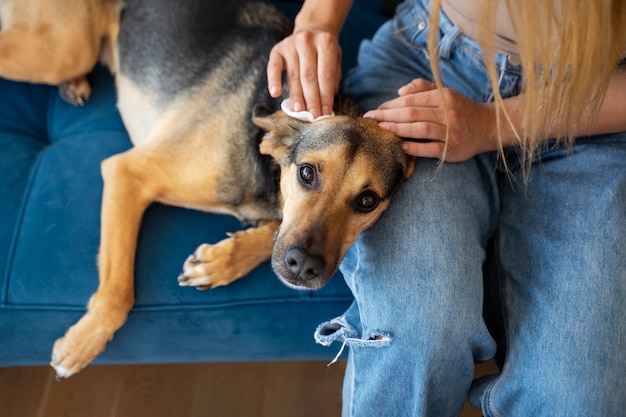Autumn Pet Safety Tips for Clifton, TX Families


Autumn Pet Safety Tips for Clifton, TX Families
As the Texas heat begins to ease and the first cool breezes of autumn arrive, pet owners in Clifton and surrounding communities start preparing for a vibrant season of outdoor adventures and cozy evenings at home. Yet, while autumn brings relief from summer’s extreme temperatures, it also introduces new challenges for keeping your pets comfortable, healthy, and safe. At Clifton Veterinary Clinic, located at 4117 Highway 6, Clifton, TX 76634, our veterinary team is dedicated to helping you navigate these seasonal changes with confidence.
This blog will guide you through essential autumn pet safety tips, from recognizing subtle signs of seasonal discomfort to managing breezy, rainy days and fluctuating temperatures. We will also share practical advice on preventive pet care in Clifton, TX, highlight the importance of routine wellness visits, and explain when it’s time to schedule an appointment for a thorough checkup. If your pet is due for a fall wellness exam or you are searching for a “vet near me” who truly understands the local climate and community, our clinic is here to support you every step of the way. For more details about how regular visits can benefit your pet year-round, take a look at our routine pet checkups and wellness exams.
Recognizing Autumn-Specific Pet Health Concerns
Autumn in Central Texas is known for dramatic weather changes—one day might feel like summer, while the next brings brisk winds and a sudden chill. These shifts can leave pets vulnerable to a range of seasonal issues. Being able to recognize the early signs of discomfort or illness is crucial for protecting your pet’s health as the weather turns.
Common Seasonal Symptoms in Clifton Pets
Key symptoms your pet may experience during autumn include increased shedding as their coat adjusts to cooler temperatures, dry or flaky skin from lower humidity, and reluctance to go outside on blustery or rainy days. Some dogs and cats may become less active or develop stiff joints, especially if they already have arthritis or orthopedic concerns. Other signs to watch for are watery eyes, sneezing, or increased scratching, which could indicate seasonal allergies or dermatological issues. If your pet spends more time indoors, you might notice changes in behavior due to boredom or reduced stimulation.
Pets in rural areas around Clifton and neighboring towns may also encounter increased exposure to wildlife or parasites seeking warmth and shelter. Fleas, ticks, and other pests remain active well into fall and can cause ongoing irritation or transmit disease. If you notice your pet scratching excessively, losing fur, or developing skin lesions, these could be warning signs of a parasite problem or an emerging skin disorder. For more information on managing these conditions, our parasite prevention services and dermatology services are designed to protect your pet throughout the changing seasons.
Understanding the Causes of Autumn Pet Risks
While many people associate summer with pet health challenges, autumn presents its own risks driven by both the environment and human activity. Understanding what factors contribute to these issues can help you be proactive in your approach to pet care in Clifton, TX.
Weather and Environmental Changes
As temperatures drop and humidity decreases, your pet’s skin and coat may become dry or brittle. Breezy days can worsen this by stripping moisture from the air and leaving your pet’s skin more prone to irritation. Sudden weather shifts may also trigger joint pain in pets with arthritis or orthopedic problems, a common concern in older dogs and some large breeds. Increased rainfall can create muddy yards that harbor bacteria, fungi, and parasites; pets who love to dig or explore may be at higher risk for infection or infestations.
Autumn Activities and Hazards
Families often spend more time outdoors during autumn, hiking local trails or participating in seasonal events. While this is wonderful for exercise and enrichment, it can expose pets to hidden hazards. Mushrooms, moldy leaves, and acorns scattered on the ground can pose poisoning risks if ingested. Rodenticides and antifreeze are more commonly used as households prepare for colder weather, but both are extremely toxic to pets. Even decorative plants and festive foods can cause digestive upset or poisoning if pets get into them.
Another concern is the increased use of scented candles, space heaters, and electric blankets as households get cozier. Each of these items presents unique dangers, from burns and electrical shocks to accidental ingestion of foreign objects or toxic substances.
Managing Seasonal Changes: Professional Care for Your Pet
When it comes to autumn pet safety tips, proactive veterinary care is your greatest ally. Our veterinary professionals at Clifton Veterinary Clinic recommend several strategies to help your pet transition comfortably into the new season.
Wellness Exams and Preventive Care
Routine wellness exams are the cornerstone of quality pet care in Clifton, TX, especially as the seasons shift. During your pet’s autumn wellness visit, our veterinarians will check for early signs of skin or coat problems, assess joint health, update vaccinations as needed, and discuss any behavioral or nutritional changes you have noticed. These visits provide an opportunity to catch problems before they escalate and to tailor care recommendations for your pet’s unique needs. If you are seeking a quality vet near me for ongoing preventive care, our clinic offers comprehensive wellness examinations designed for pets in our region.
Managing Parasites and Allergies
Even as the weather cools, parasites like fleas and ticks remain a concern in Clifton and surrounding areas. Continuous parasite prevention protects your pet from discomfort and disease. Our parasite prevention services include customized treatment plans based on your pet’s lifestyle and risk level. For pets showing signs of itching, redness, or hotspots, our dermatology services can address seasonal allergies and other skin conditions that often worsen in autumn.
Pain Management and Orthopedic Support
Older pets or those with a history of orthopedic surgery may find the cooler temperatures exacerbate joint stiffness and pain. Professional pain management options involve tailored medications, supplements, and physical therapy techniques that support comfort and mobility. If you notice your pet struggling to rise, limping, or hesitating on stairs, our pain management options are available to help them maintain a high quality of life throughout the fall and winter.
Behavioral and Nutritional Adjustments
Shorter daylight hours and increased indoor time can lead to changes in your pet’s mood or activity level. Behavioral management services help pets adjust to seasonal changes, reduce anxiety, and prevent destructive behaviors that sometimes arise during periods of boredom. If you are concerned about weight gain or loss, our nutritional counseling services offer dietary guidance tailored to your pet’s needs during autumn and beyond. For more information, you can learn about our nutritional counseling and dietary guidance or behavior management services.
Home Care and Prevention: Keeping Your Pet Safe This Fall
Proactive steps at home play a crucial role in autumn pet safety. Here are practical strategies to protect your pet through the season’s unique challenges.
Outdoor Safety and Comfort
When taking your pet outside, keep an eye on weather forecasts to avoid sudden storms or cold snaps. Providing a dry, sheltered area for outdoor pets helps them stay warm and comfortable, while keeping walks shorter on chilly, windy days can prevent exposure. Avoid letting pets roam unsupervised, as the presence of wildlife, mushrooms, and other hazards increases in fall. Regularly inspect your yard for toxic plants, sharp objects, or standing water that could harbor parasites or bacteria.
Managing Indoor Risks
As you make your home cozier, keep potentially dangerous items out of your pet’s reach. Electrical cords, portable heaters, and open flames should be carefully monitored to prevent burns or accidental ingestion. Store all chemicals, antifreeze, and rodent baits in secure locations, and remember that even a small amount of these substances can be fatal to pets. If you use seasonal decorations or bring in new plants, check that they are non-toxic and safe for curious animals.
Supporting Healthy Routines
Maintain a consistent exercise routine, even if outdoor activities become limited by weather. Indoor play, food puzzles, or short training sessions are excellent ways to keep your pet active and engaged. Monitor your pet’s appetite and weight, as changes in metabolism or activity can lead to weight gain or loss during the cooler months. Ensuring access to fresh water and a balanced diet supports immune health and overall wellbeing.
Monitoring for Seasonal Illness
Keep an eye out for signs of respiratory illness, such as coughing, sneezing, or nasal discharge, which can become more common as pets spend more time indoors and mingle with other animals. Schedule a veterinary visit promptly if you notice any changes in your pet’s breathing, appetite, or energy level.
When to Seek Veterinary Care for Autumn Concerns
Knowing when to call your veterinarian can make all the difference in ensuring your pet’s health and safety through autumn’s ups and downs.
You should schedule an appointment with your veterinarian if your pet displays persistent symptoms such as lethargy, limping, ongoing skin irritation, or unexplained weight changes. Immediate veterinary attention is warranted for signs of poisoning, difficulty breathing, sudden collapse, or severe allergic reactions—these require prompt intervention to prevent serious complications.
For pets with chronic conditions, such as arthritis or allergies, regular checkups allow your veterinary team to adjust medications and recommend new strategies as the season progresses. If you have questions about your pet’s health, our frequently asked questions page is a helpful resource, but nothing replaces the personalized care provided during an in-person visit.
If you are ever unsure about whether your pet’s symptoms require professional attention, err on the side of caution and contact our veterinary professionals at Clifton Veterinary Clinic. Our team is committed to delivering comprehensive, compassionate pet care in Clifton, TX, and helping you find peace of mind through every season.
Schedule Your Autumn Pet Wellness Visit Today
As autumn settles over Clifton and the surrounding communities, your pet deserves to enjoy the season safely and comfortably. By staying attentive to subtle changes, practicing preventive home care, and partnering with your trusted veterinary team, you can help your companion thrive through every weather shift.
If you are searching for a “vet near me” that prioritizes both expert medical care and genuine compassion, look no further than Clifton Veterinary Clinic. Our veterinarians are ready to support you with tailored autumn pet safety tips, thorough wellness exams, and proactive guidance for every stage of your pet’s life. To schedule an appointment for a fall checkup or discuss any seasonal concerns, call us at (254) 675-8925 or visit us at 4117 Highway 6, Clifton, TX 76634. For more information about our routine pet checkups and wellness exams, we invite you to explore our website.
Together, let’s make autumn a season of health, happiness, and safety for every pet in Clifton and beyond. Your pet’s wellbeing is our top priority, and our veterinary professionals are always here to help with reliable pet care in Clifton, TX.



















